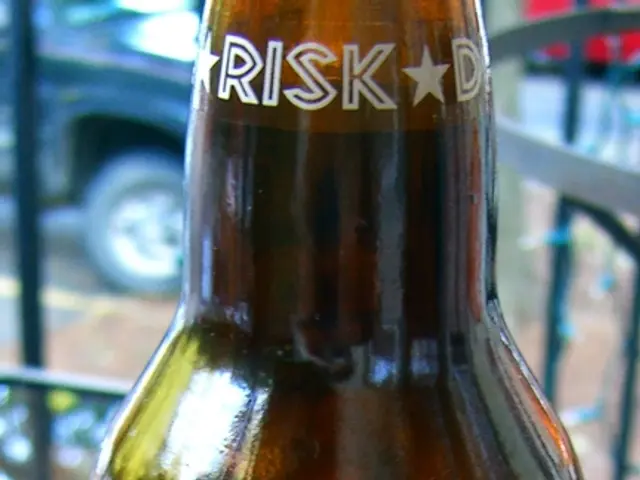Sun Safe: Protecting Your Skin from Harmful UV Rays – Seven Questions About Sunscreen
Sunscreen's Factor Consideration
Heading out in the sun can do wonders for your mood, but it can wreak havoc on your skin if you're not careful. Sunscreen is essential for safeguarding your skin from those harmful UV rays. But navigating the sunscreen aisle can be overwhelming with so many options - creams, sprays, gels, and various SPFs. So, what should you be looking for? Here are answers to the most common questions about sunscreens.
1. What's the deal with sun protection factor (SPF)?
Every sunscreen product features an SPF number, usually between 6 and 50+. SPF measures how long your skin is protected from sunburn and UV-related damage. For instance, if your skin would burn in 10 minutes without sunscreen, using an SPF 30 sunscreen could theoretically extend this to 300 minutes (10 minutes x 30 = 300 minutes).
However, it's essential to remember that the SPF doesn't dictate an absolute rule. Factors such as intense sun, sweating, swimming, and rubbing can significantly shorten the protection length.
2. Which sunscreen is right for me, and when should I use it?
Your skin type, personal preferences, and activity level all come into play when choosing the right sunscreen. Skin types that tend to burn easily may require a higher SPF, while those with less sensitive skin might opt for a lower one. Athletes might prefer sunscreens that don't run into their eyes when they sweat or those specifically formulated for physical activities.
It's also essential to remember that sunscreen should be applied regardless of cloud cover or season, especially if the UV index is 3 or higher [1]. At an index of 8, it's best to avoid extended sun exposure during peak hours.
3. How do I correctly apply sunscreen?
Covering all exposed areas with sunscreen is crucial, and this includes often-overlooked areas like ears, lips, hands, neck, and the transitions between skin and clothing [1]. After hydrating your skin, apply the sunscreen 15-30 minutes before you go out to allow it ample time to absorb and form a protective layer. Reapplication is necessary every two hours for reliable protection [1][2][3].
4. How much sunscreen should I use?
It's common for people to apply too little sunscreen. Following the general rule of thumb, apply about one ounce of sunscreen (roughly a shot glass full) to cover exposed skin, and about a teaspoon for the face.
5. Should I bother with sunscreen in the morning, even when cloudy?
Yes! Although clouds can block some sunlight, they don't block all UV rays - up to 80% can still penetrate the clouds [1]. Plan your sun protection carefully, even on overcast days.
6. What's the deal with children and sunscreen?
Children need special consideration when it comes to sunscreen. Children's skin is more sensitive, so a high SPF is recommended. Additionally, parents should opt for physical sunscreen that provides instant protection from UV rays [5].
7. How long is my sunscreen good for?
If it's a new, unopened bottle, it should be good for up to three years. However, once opened, sunscreens typically maintain their effectiveness for about 12 months. It's essential to check the expiration date and storage conditions of your sunscreen.
In summary, your skin's natural protection time and SPF factor play a role in determining your theoretical protection window. However, with the influences of various factors, such as intense sun, sweating, and poolside frolics, it's essential to reapply sunscreen every two hours for reliable protection across all skin types [1][2][3]. Stay safe and enjoy the sun responsibly!
References:[1] Cancer Research UK (n.d.) Sun safety guide. Retrieved April 04, 2023, from https://www.cancerresearchuk.org/health-professional/cancer-awareness/campaigns/sun-smart/sun-safety-guide
[2] Skin Cancer Foundation (n.d.) Sunscreen 101. Retrieved April 04, 2023, from https://www.skincancer.org/prevention/sun-protection/sunscreen
[3] American Academy of Dermatology (n.d.)Sun Protection Frequently Asked Questions. Retrieved April 04, 2023, from https://www.aad.org/media/stats/prevention-and-care/sun-protection-faqs
[4] Mayo Clinic (2019) How to Apply Sunscreen Correctly. Retrieved April 04, 2023, from https://www.mayoclinic.org/healthy-lifestyle/adult-health/expert-answers/how-to-apply-sunscreen/faq-20058274
[5] The University of California, San Diego Skin Cancer Center (2020) Sun protection tips for sensitive skin. Retrieved April 04, 2023, from https://health.ucsd.edu/specialties/dermatology/pages/sun-protection-tips-for-sensitive-skin.aspx
- In the realm of health-and-wellness and skin-care, employing an appropriate sunscreen becomes a vital part of protecting your skin from the sun's harmful UV rays.
- Employment of sunscreen is essential in safeguarding your skin, especially when participating in outdoor activities or during peak hours with an UV index of 3 or higher.
- The inherent factor in choosing the right sunscreen should be based on your personal needs, skin type, and activity level, as well as factors such as SPF, form (cream, spray, gel), and water resistance.
- Whatsapp, to spread awareness about sun safety, could explore a community policy on the importance of using sunscreen and reapplying it every two hours for reliable protection.
- A comprehensive employment policy could be implemented by employers in industries with outdoor jobs, emphasizing the need for regular sunscreen application, protective clothing, and encouragement for sunscreen breaks throughout the day.







